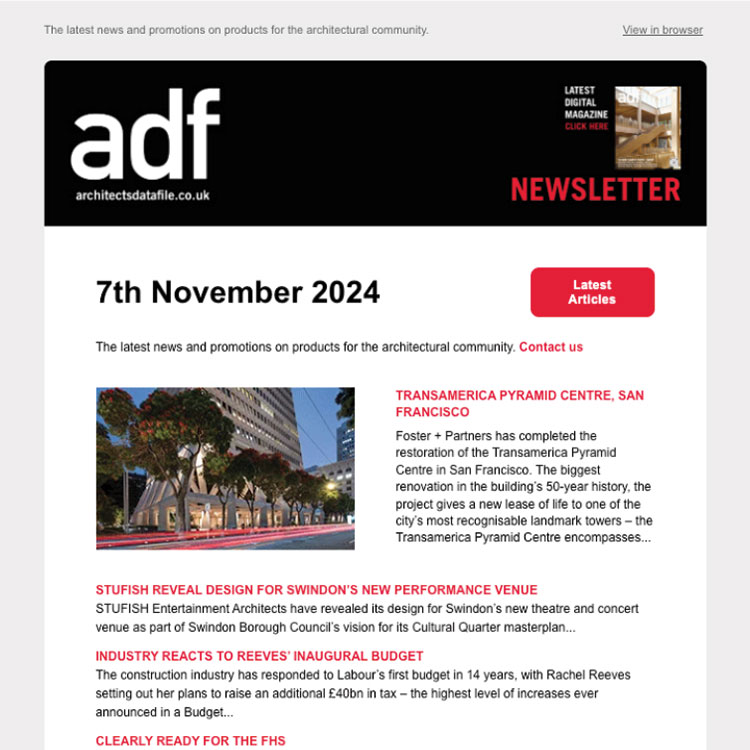The annual Brick Awards celebrate every aspect of brick design and construction and showcase some of the key trends. These trends were evident in the Brick Development Association’s 2016 awards held in November, particularly these highly commended and award winning project examples.
Contrast
Architects Virgile and Partners’ work on the prestigious Birmingham department store Harvey Nichols, was acknowledged for its innovative use of brick and clay.
The architects were keen to challenge the expectations of a traditional luxury shopping experience. The use of brick with other unconventional materials makes an eye catching interior and one that is sure to be replicated in both the retail and domestic sphere.
The wide variety of materials used in the wall, which uses plywood boxes and marble finishes, forms a dramatic contrast. The brick slips and pistol slips form a smooth wave which is combined with other elements to create a three-dimensional, stand-out feature.
The feature makes a strong contribution to the overall ambience of the store, and truly fulfils the architects’ brief of an atmosphere of ‘controlled disruption’.
Inside out
Out of the 15 Brick Awards, Newport Gallery was the notable receiver of four, scooping the BDA Craftmanship, Best Public Building, and Specialist Brickwork Contractor awards, as well as being crowned the Supreme winner.
Designed by Caruso St John Architects, the building exemplifies the radical effects that are being achieved with brick in modern buildings, and was also recently awarded the highest accolade in the British Architectural Landscape, the RIBA 2016 Stirling Prize.
The project involved remodelling three purpose-built former theatrical set painting workshops into a terrace with new buildings clad in a matching pale red semi-glazed Gloucestershire brick. Northcot brick, together with a darker brown bespoke brick, were used to mark the entrance piers and soffit.
The existing facade was restored and extended either end with bricks laid in lime mortar carefully chosen to match the existing for size colour and texture, and incorporating bespoke brick arches, numerous handmade special bricks and feature ‘saw tooth’ gable ends.
Internally the magic really comes to life using Oslo Pearl White bricks as an interior design feature. Also laid in lime mortar, they were used to construct four Ellipse staircases from ground level to roof. The setting out and control tolerances were at an absolute minimum as the staircases incorporated feature brick lintels and soffits, bespoke inset curved stone hand rails and wooden stairs, all finished to the highest and most exacting standard, creating a crafted quality rarely seen today.
Texture
Architecture studio Project Orange has reinterpreted the traditional London mews to create a row of contemporary brick studio buildings with residences above.
Foundry Mews, recipient of the Brick Awards’ 2016 Best Small Housing Development, replaces a dilapidated car repair workshop, creating a mix of workspaces and homes that are hidden behind a row of high-street shopfronts in west London.
Brick facades and slate roofs reference the surrounding buildings, but also feature contemporary additions including perforated and protruding brickwork details, producing a modern textured look. The perforated pattern is referenced elsewhere on the facade where the bricks protrude outwards to create decorative dimples that create a pattern of light and shadow.
Bespoke brickwork
Recognised for its bespoke brickwork, the Gagosian Gallery is a remarkable example of this customised craft that is becoming ever more popular in the design of modern structures. Bespoke irregular sized handmade bricks were laid in lime mortar to produce a unique facade incorporating feature lintels and louvered design.
The bricks were also laid in ‘random’ bond, with the architectural vision being that no two adjacent course be laid in the same way as the course immediately above or below, thus completing the transformation of this 1960s building into a contemporary new art gallery with adjoining offices in the heart of London’s Mayfair.
New architectural motifs
The St John’s Hill development near Clapham, South London, was met with high praise at the 2016 Brick Awards, receiving the Best Large Housing Development Award for the project’s first completed phase.
The development, instructed by London housing association, Peabody, was conceived by architectural practice Hawkins\Brown. Works have seen 300 sub-standard homes demolished to make way for almost twice as many, new community-centred homes.
Working with local artist Rodney Harris, the development showcases the ability of brick to provide an artistic means of expression alongside its obvious merits as a highly-functional facade material. Harris, who produced four brick reliefs, referenced elements of the local community based on the site’s heritage. This beautiful design was brought to life through a diverse palette of Wienerberger brick and the craft of Lee Marley Brickwork.


